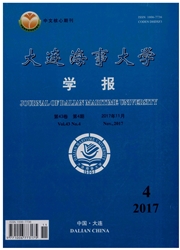

 中文摘要:
中文摘要:
为更好地对油水进行分离,分析了斜板间油水两相分层流动过程中水层对油层的拖带作用,应用Navier—Stokes方程.建立斜板间油水两相流动速度分布的数学模型.对被拖带油层在不同黏度和厚度条件下的运动速度进行数值模拟,并比较不同油层黏度时斜板间的油水速度分布.计算结果表明:油层黏度增大使油水两相的平均速度差变大,水层对油层的拖带作用降低,而油层厚度的增大可以提高两相之间的拖带作用.
 英文摘要:
英文摘要:
The drag effect of water phase on the oil one in the flowing process of stratified oil-water two-phase between inclined parallel plates was analyzed to separate oil from water efficiently. The models for velocity profiles of oil-water two-phase stratified flow between inclined parallel plates were established by using Navier-Stokes equations, and numerical simulations for the velocity profiles of the dragged oil phase were made under conditions of different viscosity and thickness, and then oil-water velocity profiles with different viscosity were compared. Results show that the difference of mean velocity between oil and water increases with oil viscosity increasing, therefore the drag effect of water phase on oil one reduces, but the thicker oil phase can improve the drag effect between oil and water phase.
 同期刊论文项目
同期刊论文项目
 同项目期刊论文
同项目期刊论文
 期刊信息
期刊信息
